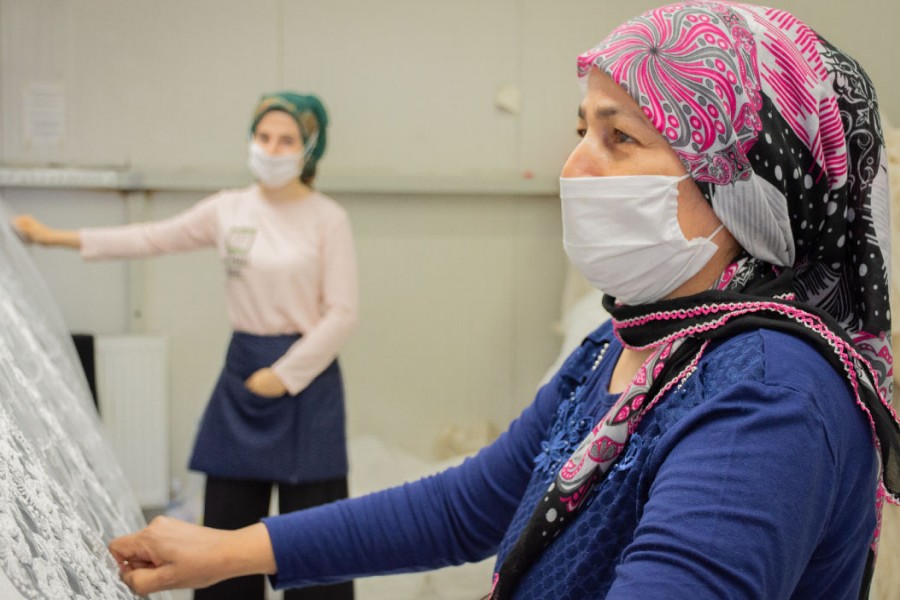Gender and unemployment: Lessons from the pandemic

Simonetta Zarrilli and Henri Luomaranta
Published :
Updated :

The Covid-19 pandemic has had a negative impact on both women's and men's employment - but at different stages of the crisis due to the gender segregation of economic activities in many countries.
United Nations Conference on Trade and Development (UNCTAD) analysis shows that early measures to curb the spread of the virus first hit jobs held predominantly by women, such as personal services. At the outset of the pandemic, a higher prevalence of the virus correlated with a higher rate of female unemployment.
But as the crisis worsened and disrupted cross-border value chains, the impact on men's employment increased because they tend to work in sectors and jobs that are more dependent on international trade.
Even more worrisome, though, than how the pandemic has affected unemployment rates is its impact on women's participation in the labour market.
The available data reveals that even in countries where men's unemployment rate outpaced that of women, more women left the labour market entirely in 2020. The significant drop in the number of women actively searching for a job threatens to reverse decades of progress on women's empowerment.
MEN'S UNEMPLOYMENT INCREASED AS THE CRISIS WORSENED: Overall, the volume of international trade in goods dropped by a dramatic 16 per cent in the second quarter of 2020 compared with the same period of 2019.
In manufacturing, the global trade slump affected sectors that primarily employ men. In the United States, for example, exports of capital goods, industrial supplies and automotive industries were hit hard. Men comprise more than 70 per cent of people employed in manufacturing, according to the US Bureau of Labour Statistics.
By August 2020, data started to show increases in men's unemployment. Meanwhile, in countries where the spread of the virus had begun to slow, governments started easing confinement measures, allowing people to return to their jobs, especially women in the services sector.
WOMEN'S LABOUR FORCE PARTICIPATION STILL FELL MORE: Yet even as men's unemployment overtook that of women in some countries, women's labour force participation continued to decline more rapidly, adding an important nuance to the Covid-19 unemployment landscape.
Discouraged by the pandemic, many people who lost their jobs stopped actively looking for work. Since such people are excluded from unemployment statistics, it's important to also analyse labour force participation.
UNCTAD analysis finds a strong correlation that exists between Covid-19 prevalence and a decline in women's labour force participation. The International Labour Organization also found that women's working hours dropped dramatically in 2020.
Part of the explanation lies in women's high share of tourism jobs. Globally, tourism suffered an estimated loss of $1.3 trillion in export revenues - more than 11 times higher than during the 2009 global economic crisis, according to the World Tourism Organization, which warned that up to 120 million tourism jobs were directly at risk.
A CLOSER LOOK AT SPECIFIC COUNTRIES: In the US, 4.40 per cent of both women and men were unemployed in March 2020. But in just one month, unemployment jumped to 16.10 per cent for women and 13.60 per cent for men. The gender difference disappeared gradually and both rates fell to 6.70 per cent in December 2020. But during the year, women's labour force participation dropped by 3.40 per cent compared with 2.80 per cent for men.
Chile provides another good example of how Covid-19 has affected men's and women's unemployment and labour participation differently.
In the South American nation, men's unemployment increased faster than women's in spring and summer 2020 - a 90 per cent drop for men compared to less than 60 per cent for women. Yet in August 2020, women's decline in labour force participation was worse, falling 16.60 per cent year-on-year compared with 10 per cent for men.
Statistics from Italy show that women's employment was hit harder at the start and throughout the pandemic. According to the national statistics institute (ISTAT), 326,000 women had lost their jobs in 2020, compared with 141,000 men. Overall, women's labour force participation in the European nation was notably lower than that of men before the crisis (56.2 per cent compared with 74.6 per cent) and decreased even more during it (by 3.7 per cent for women and 1.2 per cent for men).
From the viewpoint of women's empowerment, it's particularly alarming that in these and other economies more women than men are leaving the workforce.
MORE GENDER-DISAGGREGATED DATA NEEDED: Covid-19's impacts on unemployment are not gender neutral, and recovery efforts should include targeted action to bring more women back into the workforce.
Effective response measures and policies require comparable and granular statistics to tell the full story of the pandemic's socioeconomic impacts on women and men. Governments must therefore provide national statistical offices with the resources they need to produce more gender-disaggregated data that can be used to assess the economic aspects of gender equality.
UNCTAD is working closely with them and international organisations to develop better statistics and policies to enable the design of recovery responses that improve gender equality in the future economy and job markets.
The original piece, with the graphs, is available at www.unctad.org/news


 For all latest news, follow The Financial Express Google News channel.
For all latest news, follow The Financial Express Google News channel.